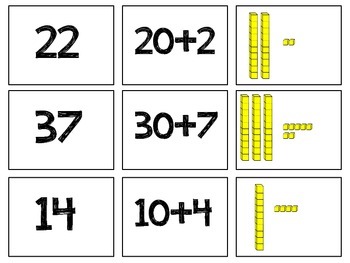
It is believed that by using pictures instead, it helps overcome this reliance on linguistic skills by making the problem more concrete or realistic. In other words, there are now extra steps requiring – amongst other cognitive abilities – text comprehension and – in the case of written text – word recognition abilities (Fuchs, Fuchs, Compton, Hamlett, & Wang, 2015). Therefore, solving a simple word problem needs extra skills that are not required for a concrete real-life problem situation (Rasmussen & Bisanz, 2005).

In contrast, in the case of a mathematical word problem, which can be seen as the written or oral description of the real-life problem, the solver has to build an internal representation – a mental model – based on the textual description (Kintsch, 1986 Thevenot, 2010).

In a concrete, real-life quantitative problem, a problem solver is perhaps able to see the elements of the involved sets of objects or measure the quantities and manipulate them in order to carry out operations like adding and subtracting. Still, current maths curricula aim at translating real-life situations into mathematical problems to make maths more realistic. However, many of the word problems used in school are not really inviting the student to apply real-world knowledge due to their artificial nature (e.g., Verschaffel, De Corte, & Lasure, 1994) and are, therefore, not always the best vehicle to represent real-life situations. Mathematical word problems can be used to represent real life situations helping the child: 1) Understand the connection between the represented situation and the mathematical operation, and 2) exercise the application of mathematical operations in real-life situations.
#Pictorial models in math how to#
Thirdly, it is a form of exercising basic arithmetic operations and it has been shown that practicing to write number sentences for arithmetic word problems can help a child learn how to solve them (Carpenter, Moser, & Bebout, 1988 Stellingwerf & van Lieshout, 1999). Secondly, it helps the student get acquainted with the use of symbols such as the plus, minus and equals signs and the place of all elements, including the numbers. Practicing how to write number sentences can have several functions: First, it elucidates the formal representational function of the number sentence for a mathematical problem that is presented in a verbal or pictorial context. These are available in worksheets, practice and testing booklets, on paper, or on the computer, often in the form of pictures. Many mathematics curricula, in the Netherlands and outside, contain exercises on writing number sentences. These results are in line with the cognitive load theory framework, but we also offer an alternative explanation regarding attention.Īt the start of mathematics education children are taught first to understand the meaning of addition and subtraction later, they start learning how to formally represent these operations in the form of number sentences (a ± b = c). With response time this effect occurred only in the group of lower mathematics achieving children. Also, the combination of pictorial and auditory information reduced the accuracy lag of the decrease problems compared to the increase problems. As expected, children performed worse on the decrease problems compared to the increase problems. We conducted an experiment with sixty children attending the first grade of primary school, who were divided into a higher and lower mathematics-achieving group. We further expected that these effects would be most prominent in children who score below average on a general mathematics test. We also hypothesised that combining the pictorial information with auditory information would reduce this load and, as a result, would lead to improved performance. Within the Cognitive Load Theory framework, we expected that commonly used decrease problems would be harder and slower to solve than increase problems because of higher intrinsic cognitive load.

A decrease is, however, more difficult to represent in paper pictorially than an increase. One type of problem concerns the representation of an increase or a decrease in a depicted amount. They are asked to solve the problems by filling in corresponding number sentences. At the start of mathematics education children are often presented with addition and subtraction problems in the form of pictures.


 0 kommentar(er)
0 kommentar(er)
